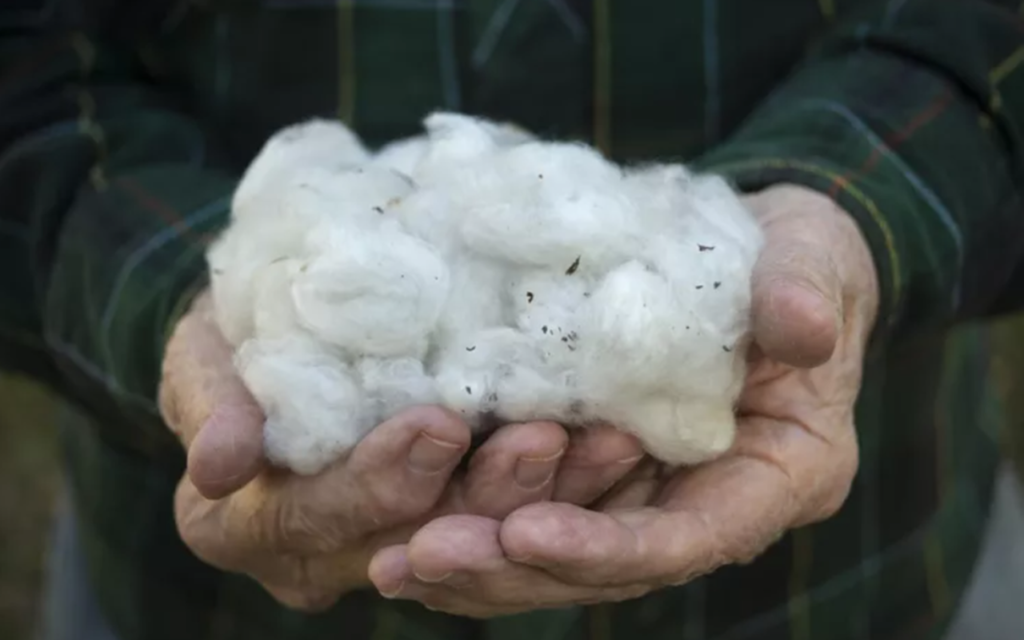
Cellulose ether is a general name for various derivatives obtained through the etherification of natural cellulose. As the primary raw material, the source, type, treatment method, and process of cellulose have a decisive impact on the synthesis and application of cellulose ether.
Sources and types of cellulose
As early as 1838, French botanist Anselme Payen treated wood alternately with nitric acid and sodium hydroxide solutions and isolated a white substance with a uniform structure. He named it cellulose for the first time, which means the substance obtained after cell rupture. The polymeric form of cellulose was not identified until 1932 by Staudinger.
As the most abundant natural organic, renewable resource, cellulose comes from green terrestrial, seabed plants and animals. According to the source, plant cellulose is divided into cotton, wood, hemp, and various straw types. It is the main component of plant fiber cell walls; some are animal cellulose from animal bacteria, seabed organisms, and various animals. Due to climate and regional differences, the types of wood fibers owned by each country are also different for the industrial production of cellulose ether. The world’s leading natural wood fibers come from various softwoods and hardwoods. In addition to natural forests, there are also some cultivated softwood and hardwood species. Various other non-wood fiber raw materials, mainly grass plants, such as cereals (rice, wheat), straw, sugarcane bagasse, and bamboo, are also important sources of fiber but have yet to be fully utilized.
The main methods of producing cellulose pulp from wood include bisulfite, sodium sulfite, and pre-hydrolysis Kraft processes. The purpose is first to dissolve hemicellulose and a large amount of residual lignin, then bleach and remove the residue, and finally obtain a purity pulp with high alpha-cellulose content. Various sulfurous acid pulping processes use sulfur dioxide as the primary method to remove lignin, changing the cation type, solution pH value, and cooking temperature. The acidic calcium bisulfite pulping process is used worldwide, but its use is limited due to the insoluble calcium sulfate produced during chemical regeneration. Later, so-called soluble cations were introduced, such as magnesium, sodium, and ammonium ions, and the solution pH value increased from 1 to 2 in the traditional calcium bisulfite process to 5 in the magnesium bisulfite process and even reached sodium bisulfite/sodium hydrogen sulfate conditions for sodium hydrogen process.

The acid bisulfite process and modified two- or three-step sodium sulfite processes, such as the Rauma process, played an essential role in the dissolution pulping industry for a long time, and the acid bisulfite process is still in use. The main feature of the multi-step process is that the bisulfite/sulfite stage and the alkaline stage alternate. The process can start or end with the alkaline stage. The latter requires alkaline extraction to reduce the residual hemicellulose content.
The Kraft pulping process is commonly used worldwide and is the primary process for grading wood pulp in paperboard. Pre-hydrolysis is done before Kraft cooking to obtain a dissolving wood pulp-grade product. Prehydrolysis involves steaming or cooking wood chips at 140 to 170°C or treating them with dilute acid at 110 to 120°C. Steam or water treatment can destroy the acetyl and formic acid groups in the wood to form acetic acid and formic acid, making the pH value of the wood reach 3.5 to promote the depolymerization of the wood components. The quality can be reduced by 5% to 20% depending on the hydrolysis time and temperature. Nearly half of the softwood hemicellulose is mainly glucomannan, which dissolves after hydrolysis, but the lignin hardly changes; relatively speaking, a large amount of hardwood lignin dissolves. If the hydrolysis time is prolonged, the cellulose will change, leading to a reduction in α-cellulose production and the condensation of more lignin. It will also make it more challenging to remove lignin in the later stages of the process, requiring stronger alkali and higher temperatures. In the pre-hydrolysis stage, wood loss is 20% to 22%, and beech (Fagus silvatica) can obtain higher α-cellulose content (95% to 96%). Increasing the pre-hydrolysis and Kraft cooking temperature of wood pulp can reduce the processing time, and at the same time, the viscosity is significantly reduced when the α-cellulose content is equivalent. All conditions are equal; the alpha-cellulose content obtained from pine and birch is the same (slightly less than 96%), while that of eucalyptus is more than 97%. The viscosity is roughly the same as that of hardwood pulp but significantly higher than that of pine pulp.

The raw materials range from softwood to hardwood, and the process ranges from acidic sulfurous acid to alkaline pre-hydrolysis Kraft method. Modern dissolving wood pulp production technology has been extensively developed. The use of hardwood can produce wood pulp with high alpha-cellulose content, and it is easy to achieve completely chlorine-free bleaching (that is, TCF process, which means that no chlorine-containing substances are added in each process stage) bleaching process. However, in the final analysis, regenerated cellulose with excellent performance requires high cellulose activity, high α-cellulose content, narrow polymerization degree distribution, and easy control of solution viscosity.
